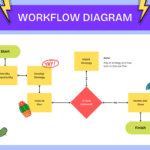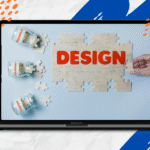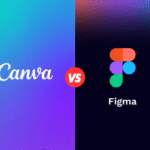Now Reading: Design Workflow Automation: How Generative AI is Changing the Game
-
01
Design Workflow Automation: How Generative AI is Changing the Game
Design Workflow Automation: How Generative AI is Changing the Game

Introduction to Design Workflow Automation
Design workflow automation refers to the application of technology and systematic processes to enhance the efficiency and effectiveness of design projects. In traditional design workflows, professionals often face significant challenges such as time-consuming manual tasks, inconsistent output, and difficulties in collaboration. These inefficiencies can lead to project delays and increased costs, making it essential to explore more streamlined approaches in the modern creative and instructional design landscape.
As the demand for rapid content production rises in various sectors, the relevance of design workflow automation becomes increasingly apparent. By automating repetitive tasks, such as image formatting, file organization, and version control, designers can allocate their time to more strategic aspects of their work, such as ideation and innovation. This shift not only enhances productivity but also improves the overall quality of the designs produced, as human error can be minimized when routine tasks are handled by automated systems.
Moreover, traditional design workflows often suffer from a lack of integrated tools, resulting in fragmented processes that make collaboration among team members challenging. This disjointed approach can hinder creativity as ideas may not flow as freely between departments or among stakeholders. Design workflow automation provides a solution by enabling seamless integration of various tools and platforms, allowing teams to work cohesively and share resources effortlessly.
With the integration of generative AI into design workflow automation, the potential for innovation expands even further. Generative AI can suggest design elements, create variations, and even learn from past projects to optimize future outcomes. As we delve deeper into this transformative technology, it is crucial to recognize how design workflow automation not only addresses traditional inefficiencies but also elevates the creative process to new heights.
The Rise of Generative AI in Design
In recent years, generative AI has emerged as a transformative force within the design industry. This phenomenon denotes a class of artificial intelligence systems that can autonomously generate new content based on predefined parameters and datasets. These tools range from software that creates visual art to algorithms capable of fabricating intricate architectural designs. The rise of generative AI affords designers the ability to augment their creative capabilities and streamline workflows by automating repetitive tasks.
One of the most notable types of generative AI tools includes design algorithms that utilize machine learning techniques to create unique visuals based on user-defined criteria. For instance, platforms like Runway and DALL-E enable creators to generate artwork by simply inputting text prompts. These tools leverage extensive training on vast datasets, allowing them to produce diverse styles and concepts that might not have been conceived through traditional methods. Additionally, such systems can help bridge the gap between designers and clients, showcasing various design iterations rapidly to refine concepts with minimal effort.
Moreover, generative AI is reshaping how designers approach problem-solving. With tools equipped in computer-aided design (CAD) software, such as Autodesk’s Dreamcatcher, users can input functional requirements and constraints, allowing the software to explore countless design solutions. This not only enhances creativity but also accelerates the design process, as potential design failures can be identified and resolved at an early stage. Popular brands have already adopted generative AI; for example, Nike utilizes these systems to innovate their product designs efficiently.
As generative AI continues to evolve, it has become an essential asset for designers aiming to push the boundaries of creativity and efficiency. The adaptability and power of these tools signal a significant shift in the design landscape, providing designers with unprecedented capabilities to produce innovative work.
Benefits of Implementing Generative AI for Workflow Automation
The incorporation of generative AI into design workflow automation has brought about a transformative shift that organizations now recognize as crucial to their operational efficiency. One of the most notable advantages of adopting this technology is the significant time savings it offers. Traditional design processes often involve repetitive tasks which can be time-consuming. However, with generative AI, these tasks can be streamlined, enabling designers to focus on more critical aspects of their projects.
In terms of improved productivity, generative AI systems can produce design iterations in a fraction of the time it would typically take a human designer. For instance, a case study involving a prominent architecture firm demonstrated that the implementation of generative AI reduced the design cycle time by over 50%. This newfound efficiency not only accelerates project timelines but also empowers teams to take on more projects simultaneously, driving higher output rates.
Moreover, generative AI promotes enhanced creativity by providing designers with innovative options that might not have been conceived through manual processes. By leveraging complex algorithms, AI can analyze vast datasets to suggest unique patterns and solutions, enabling teams to explore a broader range of design possibilities. Such creative augmentation can lead to elevated design quality and originality.
Better resource allocation is yet another benefit that organizations experience when integrating generative AI. With routine tasks automated, businesses can maximize their workforce’s skills for higher-level thinking and problem-solving. This strategic distribution of human resources not only leads to more fulfilling work experiences for employees but also enhances overall business performance.
To sum up, the benefits of generative AI in automating design workflows encompass time savings, heightened productivity, enhanced creativity, and improved resource management. As companies pivot towards this innovative approach, they position themselves to thrive in a competitive landscape.
Key Components of a Generative AI-Enhanced Design Workflow
The integration of generative AI into design workflows offers transformative advantages that optimize efficiency and creativity. Central to this enhancement are several key components that facilitate a seamless transition from traditional practices to AI-supported methods. One of the primary components is the integration of AI tools and software, which can automate repetitive tasks and generate design alternatives. This allows designers to focus on higher-level creative decision-making rather than on mundane details.
Collaboration is another critical aspect of a generative AI-enhanced workflow. AI tools provide platforms for real-time collaboration among team members, enabling them to work together more effectively regardless of their geographical locations. Features like shared design spaces and instant feedback mechanisms promote an environment where ideas can flow freely, drastically reducing the time taken from concept to execution.
Feedback loops are equally essential in refining designs. Generative AI can learn from user interactions and provide suggestions based on past preferences, grounding the design process in data-driven insights. This results in iterative improvements that enhance the quality and relevance of design outputs. Moreover, these feedback loops help stakeholders to maintain alignment, as they can quickly assess designs and suggest alterations aligned with project goals.
Lastly, adaptability to change is a crucial characteristic of a generative AI-enhanced workflow. As design needs shift or new technological advancements emerge, AI systems can adjust to these changes with minimal disruption. For instance, if a project pivots in scope, generative AI can generate alternative design solutions in response, thus maintaining project momentum.
Incorporating these components effectively contributes to creating a dynamic and efficient design environment that harnesses the full power of generative AI technology.
Challenges and Considerations in Adopting Generative AI
As organizations increasingly look to generative AI to enhance their design workflows, it is essential to address the myriad of challenges and risks that may accompany its adoption. Among the foremost concerns are ethical considerations surrounding the technology. With generative AI capable of producing creative outputs, questions arise regarding authorship and originality, especially if the model leverages existing works without appropriate attribution or consent. Companies must navigate these complexities to ensure that they operate within ethical frameworks while simultaneously benefiting from the efficiencies provided by AI.
Another significant challenge relates to data privacy. The training of generative AI models often necessitates vast amounts of data, some of which may contain sensitive or proprietary information. Organizations must implement transparency measures and robust data management practices to protect user privacy and uphold compliance with regulations, such as GDPR and CCPA. This entails establishing strict protocols for data handling and ensuring that stakeholders understand the implications of using generative AI tools in their workflows.
The learning curve associated with adopting generative AI can also pose hurdles for teams. As new technology is integrated into existing processes, staff members may require training to familiarize themselves with AI capabilities and limitations. This adjustment period might initially result in decreased productivity as teams adapt to new tools. However, these challenges can be mitigated through comprehensive training programs and support systems that ease the transition and encourage collaboration between human designers and AI.
Last but not least, the integration of generative AI into established technology stacks can be complex. Organizations should consider compatibility with existing software and workflows to maximize efficiency. This may involve investing in better infrastructure or upgrading legacy systems to facilitate seamless integration. Addressing these challenges will not only enhance the adoption process but will also empower organizations to fully leverage the transformative potential of generative AI in their design workflows.
The Role of Human Creativity in AI-Driven Design
In the realm of design, the advent of generative AI has sparked significant discourse about its influence on the creative process. While AI excels in processing vast amounts of data and generating numerous design iterations quickly, it is imperative to recognize the irreplaceable value of human creativity. Human designers bring a unique perspective, emotional intelligence, and a nuanced understanding of cultural contexts that machines are not capable of replicating. This interplay between human creativity and AI capabilities fosters an environment where both can thrive.
Human creativity is characterized by imagination, intuition, and the ability to conceptualize ideas that resonate on an emotional level. These attributes enable designers to create works that not only fulfill functional requirements but also evoke feelings and connect with audiences. Generative AI, while sophisticated, lacks the intrinsic qualities that drive genuine human expression. Thus, rather than viewing AI as a replacement for human creativity, it should be perceived as a collaborator that enhances the design process.
The partnership between humans and AI in design can yield remarkable outcomes. For instance, designers can leverage AI tools to automate routine tasks such as generating multiple design variations, allowing them to focus on refining concepts and experimenting with innovative ideas. This orchestration enables a more efficient workflow, ultimately leading to a higher quality of output. By embracing AI’s capabilities and integrating them into creative practices, designers can push the boundaries of what is possible in their work.
In conclusion, while generative AI contributes significantly to the design landscape, it is crucial to remember that human creativity remains vital. The most compelling designs arise from a collaborative approach where AI acts as a catalyst, augmenting human inventiveness. Together, they can reshape the world of design, creating an ecosystem where both creativity and technology coexist harmoniously.
Future Trends in Design Workflow Automation and Generative AI
The landscape of design workflow automation is rapidly evolving, driven by advancements in generative AI technologies. As we look to the future, it becomes evident that several trends are poised to shape the way designers work, creating both opportunities and challenges in the process. One significant trend is the increased integration of machine learning algorithms that enable generative AI to refine and automate design tasks. This capability allows designers to focus on more creative and strategic aspects of their work while repetitive tasks are efficiently handled by AI systems.
Moreover, we can anticipate the development of more sophisticated design tools that incorporate generative AI principles. These tools will likely provide enhanced collaboration features, allowing design teams to work seamlessly across different platforms and geographical locations. As remote work becomes increasingly common, the ability of generative AI to facilitate collaboration will be crucial in maintaining productivity and fostering innovation within design teams.
Another important trend is the rise of personalized design experiences facilitated by generative AI. By analyzing user data and preferences, generative AI will enable designers to create tailored solutions that resonate more deeply with end-users. This will result in products and services that not only meet functional needs but also align with individual tastes and lifestyles, leading to greater customer satisfaction.
Furthermore, the ethical implications of generative AI in design will gain attention. As technology continues to evolve, discussions surrounding fairness, inclusivity, and transparency will become increasingly pivotal. Designers will be tasked with ensuring that AI systems are utilized in a manner that respects diversity and avoids perpetuating biases. This emphasis on ethical design will likely influence trends and regulations across industries.
In conclusion, the future of design workflow automation is closely intertwined with the advancements in generative AI. As we navigate through this transformative phase, embracing innovation and addressing its implications will be essential for designers aiming to thrive in a rapidly changing environment.
Implementing Generative AI in Your Design Workflow: A Step-by-Step Guide
As businesses increasingly recognize the potential of generative AI to enhance design workflows, it becomes essential to implement this technology effectively. The following step-by-step guide presents a structured approach for professionals aiming to incorporate generative AI into their existing design processes.
Firstly, begin by assessing your organization’s specific needs. Identify the areas within your design workflow that could benefit from automation or enhancement. This might involve analyzing the current processes, pinpointing inefficiencies, or recognizing repetitive tasks that a generative AI solution could streamline. Understanding the unique requirements of your team and projects will establish a clear foundation for the implementation process.
Next, proceed to select the appropriate generative AI tools. Conduct thorough research to evaluate various software options that align with your organization’s needs. Factors to consider include the ease of integration with existing platforms, the capabilities of the AI tools, user-friendliness, and the level of support provided by the vendors. Choosing the right tools is pivotal to ensuring a smooth transition and favorable outcomes in your design workflow.
After selecting the tools, focus on training your team. Generative AI technology may be new to some team members, necessitating comprehensive training sessions. This will not only improve their understanding of how to utilize the tools effectively but will also foster enthusiasm around the integration of AI within the design workflow. Encourage collaboration and exploration of the technology to achieve the best results.
Finally, establish metrics to measure success post-implementation. It’s crucial to continuously monitor the performance of generative AI within your design processes, assessing its impact on productivity and creativity. Gathering feedback from team members will provide insights that can help refine the use of AI tools, ensuring that they meet the evolving needs of your organization. By following this structured approach, you can seamlessly integrate generative AI into your design workflow, promoting innovation and efficiency.
Conclusion: Embracing Change for a Better Design Future
In the rapidly evolving landscape of design, embracing innovations such as generative AI can significantly enhance workflow automation. Throughout this blog post, we have explored how generative AI contributes to streamlining design processes, providing designers with powerful tools to enhance creativity and efficiency. By automating routine tasks, design professionals can focus more on ideation and strategy, ultimately facilitating a more productive environment.
Moreover, we have seen that the capabilities of generative AI extend from creating diverse design options to personalizing user experiences based on data insights. The ability to generate unique and tailored design solutions in a fraction of the time it would traditionally take reflects the shift towards an automated future in the design industry. This transformation not only allows for faster project completion but also opens up new avenues for innovation.
It is essential for designers and organizations to remain adaptable and proactive in integrating such advanced technologies into their workflows. The success of leveraging generative AI lies in understanding its potential benefits and applications. By fostering a culture that embraces technological advancements, designers can stay relevant and competitive in a dynamic marketplace. Collaboration between human creativity and AI-driven processes holds the promise of elevating design to unprecedented levels.
In light of these insights, it becomes clear that the interplay between design and technology is not merely a trend but a necessary evolution. Those who are willing to embrace change and explore generative AI’s potential will likely find themselves at the forefront of the design field. As we move forward, it is crucial to continuously seek out new technologies and methodologies that enhance our creative capabilities, ensuring a brighter and more efficient design future for all.























